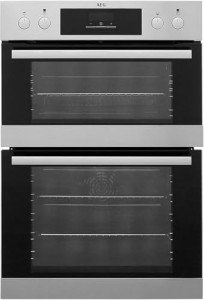The Ultimate Guide to Built-in Ovens: Enhancing Your Kitchen Experience
Built-in ovens have ended up being a popular option in modern-day kitchen areas, offering a blend of performance, design, and convenience. Unlike conventional freestanding ovens, built-in ovens are integrated perfectly into cabinetry, offering a structured appearance that can boost the aesthetic appeal of any kitchen. This post explores the various types of built-in ovens, their benefits, installation factors to consider, and upkeep suggestions.
Understanding Built-in Ovens
Built-in ovens are created to be installed directly into kitchen cabinets, allowing for a more tailored kitchen setup. They generally are available in 2 primary types: single and double ovens.
Types of Built-in Ovens
- Single Ovens: These systems provide one cooking compartment, ideal for smaller cooking areas or homes where cooking needs are modest.
- Double Ovens: As the name suggests, these systems include two separate cooking compartments, enabling users to prepare numerous dishes at various temperature levels simultaneously. This is especially useful for large families or those who often entertain guests.
- Steam Ovens: These ovens prepare food using steam, which can help retain moisture and nutrients. Steam ovens are getting appeal due to their health advantages.
- Mix Ovens: These flexible appliances combine the functions of a routine oven and a microwave, making them best for quick cooking and reheating.
Key Features to Look For
When thinking about a built-in oven, there are a number of functions that can boost your cooking experience:
- Smart Technology: Many modern built-in ovens come geared up with wise innovation, enabling users to control their oven remotely by means of smart device apps. Functions include pre-heating the oven, changing cooking times, and monitoring cooking progress.
- Self-Cleaning Functions: Built-in ovens with self-cleaning abilities can conserve time and effort in kitchen maintenance.
- Convection Heating: This feature distributes hot air for even cooking, making it perfect for baking.
- Safety Features: Look for designs geared up with functions like cool-to-the-touch oven doors and automatic shut-off choices for added safety.
Benefits of Built-in Ovens
Visual Appeal: Built-in ovens offer a streamlined and contemporary appearance that can enhance the general design of a kitchen. They can be incorporated into kitchen cabinetry, making them less invasive than freestanding designs.
Space Efficiency: Built-in ovens enhance kitchen space, particularly in smaller kitchen areas where every inch counts. They can be positioned at eye level, making it much easier to keep an eye on cooking without bending down.
Improved Functionality: With their sophisticated functions, built-in ovens offer improved cooking experiences and increased performance compared to traditional ovens.
Setup Considerations
Installing a built-in oven needs careful planning and consideration. Here are some bottom lines to remember:
- Space Requirements: Ensure that the picked oven fits snugly into the readily available cabinet area. Procedure the measurements properly, accounting for ventilation and clearance requirements.
- Electrical Requirements: Built-in ovens normally require a devoted electrical circuit. Speak with ovensandhobs for proper setup.
- Ventilation: Proper ventilation is essential for optimum oven performance. Confirm that the setup location has appropriate ventilation to avoid getting too hot and make sure safe operation.
- Professional Installation: While DIY installation may seem appealing, enlisting the help of a specialist can ensure that the oven is set up properly and safely.
Setup Steps
| Setup Step | Description |
|---|---|
| Action 1: Measure | Procedure the cabinet opening for your oven. |
| Step 2: Prepare | Prepare the electrical outlet and ventilation options. |
| Step 3: Connect | Link the oven to power, making sure all security steps are followed. |
| Step 4: Secure | Protect the oven within the cabinetry, utilizing suitable screws and brackets. |
| Step 5: Test | Run a test to ensure the oven is working effectively. |
Maintenance Tips
Routine upkeep can extend the life of your built-in oven and make sure optimum performance. Here are some maintenance suggestions:
- Clean Regularly: Wipe down the oven outside and tidy the interior regularly. Use self-cleaning functions where available.
- Examine Seals: Ensure that door seals are undamaged to keep performance and cooking performance.
- Screen Performance: Pay attention to how your oven functions-- if you observe irregular cooking or uncommon noises, it might need expert maintenance.
- Follow Manufacturer Guidelines: Always abide by the maintenance guidelines offered by the maker. This can help prevent concerns and make sure that service warranties stay valid.
FAQs about Built-in Ovens
What is the distinction in between a built-in oven and a freestanding oven?
- Built-in ovens are integrated into cabinetry, using a structured appearance, while freestanding ovens are standalone appliances that can be put anywhere in the kitchen.
Do built-in ovens need more upkeep than routine ovens?
- Not always. Maintenance depends on usage and cleansing habits more than the type of oven. Regular care is necessary for all ovens.
Can I install a built-in oven myself?
- While it is possible to set up a built-in oven yourself, it is suggested to hire a professional to guarantee safe and accurate installation, especially relating to electrical requirements.
What are the average costs of built-in ovens?
- Costs can vary substantially based on brand name, features, and specs. Basic designs might start around ₤ 800, while high-end models can go beyond ₤ 3,000.
Are built-in ovens energy-efficient?
- Lots of modern-day built-in ovens are created to be energy-efficient. Look for models with an ENERGY STAR accreditation for the best performance.
In conclusion, built-in ovens are an exceptional addition to any modern kitchen, integrating aesthetic appeals with functionality. By understanding the various types of built-in ovens, their features, and the associated setup and maintenance requirements, homeowners can make an educated choice that boosts their cooking experience and total kitchen design. As cooking innovation progresses, built-in ovens are likely to play an integral role in the future of home cooking areas, ensuring scrumptious meals are prepared with ease and benefit.

